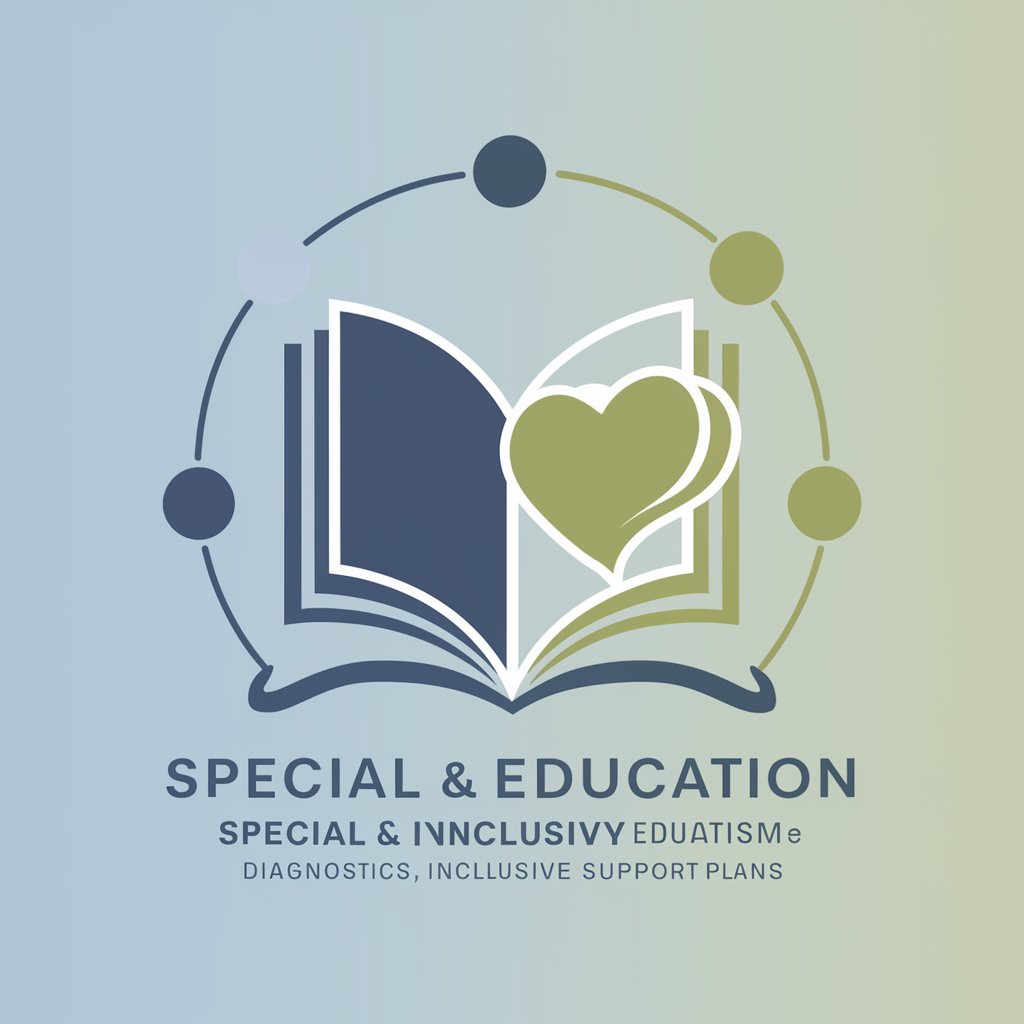
Pädagogische Analyse - AI-driven educational analysis

Hallo! Bereit, Schülerdaten und -verhalten zu analysieren?
Empowering educators with AI insights.
Analysiere diese Schüleraufgabe auf Lernschwierigkeiten.
Interpretiere das von mir beschriebene Verhalten.
Welche Hilfestellungen kann ich einem Kind mit ADHS bieten?
Schlage Strategien für einen Schüler vor, der Anzeichen von Stress zeigt.
Get Embed Code
Understanding Pädagogische Analyse
Pädagogische Analyse is a specialized tool designed to assist educators in identifying patterns in student performance and behavior that may indicate challenges such as learning difficulties, social, and emotional issues. It functions as an analytical partner for teachers by offering insights into the complex landscape of student learning and behavior. For instance, if a student consistently struggles with mathematics tasks that involve problem-solving but excels in straightforward computation tasks, Pädagogische Analyse can help identify this pattern, suggesting a potential difficulty in applying mathematical concepts to solve problems. Similarly, if a student's participation in group activities declines over time, this tool can alert the educator to potential social or emotional challenges the student might be facing. Powered by ChatGPT-4o。

Core Functions of Pädagogische Analyse
Pattern Recognition in Academic Performance
Example
Analyzing a series of math test scores to identify specific areas of weakness, such as algebra or geometry.
Scenario
A teacher uploads test scores into the system, and Pädagogische Analyse highlights that several students are consistently underperforming in algebraic questions, suggesting the need for targeted intervention in this area.
Behavioral Analysis
Example
Monitoring changes in student participation or behavior over time.
Scenario
By reviewing notes on student behavior provided by the teacher, the system can identify a student who has become increasingly withdrawn, indicating potential social challenges or emotional distress.
Support Strategies and Intervention Recommendations
Example
Providing tailored strategies to address identified learning or behavioral issues.
Scenario
After identifying students struggling with reading comprehension, Pädagogische Analyse suggests implementing group reading sessions and one-on-one tutoring to improve their skills.
Who Benefits from Pädagogische Analyse?
Teachers
Educators at all levels can use the tool to gain insights into their students' academic strengths and weaknesses, as well as their social and emotional wellbeing, enabling them to tailor their teaching strategies accordingly.
School Counselors
Counselors can utilize the tool to identify students who may need additional support, whether academically, socially, or emotionally, and to develop targeted intervention plans.
Special Education Professionals
Specialists working with students who have learning disabilities or other special needs can use the tool to monitor progress and adjust teaching methods or support mechanisms to better serve individual student needs.

How to Use Pädagogische Analyse
Start Your Free Trial
Visit yeschat.ai to begin your free trial without the need for a login or ChatGPT Plus subscription.
Upload Student Work
Upload assignments, essays, or any student-created content for analysis. You can also describe specific student behaviors you've observed.
Review Insights
Receive detailed insights into patterns of student performance and behavior that may indicate learning difficulties, social, or emotional issues.
Explore Solutions
Based on the analysis, explore suggested strategies, interventions, and resources to address identified challenges.
Apply and Monitor
Implement the suggested approaches in your teaching practice and monitor student progress, making adjustments as necessary.
Try other advanced and practical GPTs
PatternMaker(Alpha)
Empowering creativity with AI

UUID Generator
Generate Unique Identifiers on Demand

Urban Innovator
Designing Tomorrow’s Sustainable Cities Today

Vino GPT
Elevate Your Wine Experience with AI

UX/UI Designer
AI-Powered Design Innovation

Semi-Quantum
Bridging Quantum and Classical Communication

Makeup Cinema Scenes
Bringing Movie Magic to Makeup

! Mind Explorer !
Exploring Minds with AI

GPT Prompt Generator
Inspiring Creativity with AI-Powered Prompts

Tome of Wisdom - A 5E Compatible Idea Generator
Empowering RPG narratives with AI

Marketing Mentor
Empowering your marketing with AI

Best Restaurants in New York City
Discover NYC's Best Eats with AI

Frequently Asked Questions about Pädagogische Analyse
What types of student work can I upload for analysis?
You can upload a wide range of student-created content, including written assignments, essays, art projects, and descriptions of observed behaviors.
How does Pädagogische Analyse identify learning difficulties?
It uses AI to analyze patterns in student work and behavior, highlighting inconsistencies, skill gaps, and other indicators of potential learning difficulties.
Can Pädagogische Analyse help with emotional and social issues?
Yes, it can identify patterns suggesting social or emotional challenges, such as changes in participation, mood indicators in written work, and more.
Is Pädagogische Analyse suitable for all age groups?
Absolutely, it's designed to support educators across all K-12 grades and subjects, providing tailored insights and strategies for each age group.
How can I optimize my use of Pädagogische Analyse?
Regularly upload student work, be detailed in descriptions of observed behaviors, and actively engage with the provided resources and strategies for best results.





